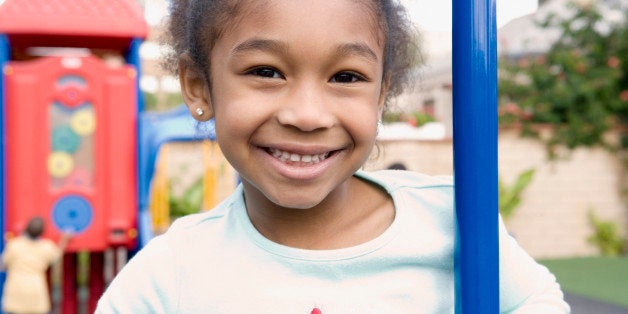
Effective classroom behavior management has been a hot topic in education for years. Classrooms are full of personalities with one teacher at the head of the class to both manage all of those unique personalities and help them thrive. Have you thanked your child's teacher lately?
In a survey of Pre-K-12th grade teachers conducted by the American Psychological Association in 2006, teachers rated help with classroom management as one of their primary needs. Ineffective discipline is one of the most significant roadblocks to promoting effective teaching. And yet, many teachers struggle to find the support they need.
In addition to the fact that disruptive behavior makes learning a challenge, discipline issues can lead to increased stress in the classroom, teacher burnout and safety concerns.
What's a teacher to do? A current trend in classroom management is to hold kids in from recess as a means of disciplinary action. The problem with this strategy, of course, is that kids need recess. They need to decompress, burn off energy and socialize. More often than not, those disruptive kids could actually use a little more playtime. Removing recess does not solve the problem.
Jessica Lahey discussed the crucial role recess plays in helping students maintain self-control in the classroom in an article in the New York Times. While the article quickly gained steam as frustrated parents and teachers chimed in about the negative aspects of removing recess, it also left us wondering, what can we do instead?
Many well-intentioned teachers implement what are commonly viewed as "positive" behavior management systems in the classroom. These might include marble jars (marbles are earned for a positive behaviors with a treat earned when the jar is full), clip systems (clip up or down based on behavior), classroom behavior charts on the wall, and color card systems.
While these systems are designed to promote positive behaviors, they usually do more harm than good. They can distract the students from learning, as many students become fixated on where they stand each day and the public wall of behavior can actually trigger anxiety in some students.
As with parenting, positive discipline in the classroom revolves around treating children with respect, while trusting that they have wisdom and knowledge of the learning style that works best for them. They are capable little people to work with, not terrible ones to boss around.
Focus on solutions.
Instead of taking something away or using a threat, ask the child a question that focuses on finding a solution. Motivate the kids to come up with three potential solutions to each problem and choose the best one. When kids feel in control, they are more likely to make positive choice.
Use systems and schedules.
Routines increase cooperation. Have "away spots" for everything, systems for all transitions like getting to the lunch area or out at the end of the day, and visible schedules so everyone knows what is happening, when. Mini versions of the daily schedule taped to the desk can be helpful for students who struggle with transitions.
Skip the rewards and rely on encouragement instead.
Reward and praise systems can grow a child's extrinsic motivation -- the need to be pushed by someone to complete tasks. Encouragement does something different; it grows a person's feeling of capability. When a child feels he is capable, his confidence and self-esteem will also grow.
Consider individualized plans.
Short-term behavioral goals developed with the child's parents can help kids focus on improving one behavior at a time. Work with the student and the parents to uncover the root of the problem and go from there. It's crucial to both label the positive behavior being encouraged and to provide strategies to help the child meet that goal. Children develop patterns fairly quickly, and those patterns can be difficult to break without guidance.
Roam the classroom.
Students are more alert and engaged when the teacher is on the move. After the instruction if provided, walk around and check in on students. Also, establish non-verbal cues with the students who need the most help staying focused (ex: point to the word "focus" taped on the desk) and utilize those when you're walking around the classroom.
Meet sensory needs.
Kids are sitting for longer periods of time and are learning at an accelerated rate. This needs to be balanced with fresh air, creativity, and movement. Stress balls, weighted lap pads, Thera-bands, seat cushions, and inflated therapy balls (in lieu of a chair) can all help kids remain focused and decrease disruptive behavior.
Prioritize relationship building.
Children are more cooperative with people they feel connected to. Connecting with some students might seem impossible, particularly the ones who seem to challenge teachers every chance they get. Try to find common ground. Even something as small as a shared love of gummy worms can jumpstart a connection and increase positive interactions.
Create a space to regroup or calm down.
Despite increased academic stress for kids, most kids don't know how to cope with big feelings. It's up to us to teach them. A calm-down center might include sensory strategies, music with headphones, books, and a beanbag chair for relaxing. Students should be given a certain amount of time to visit the calm down center to regroup and then reenter the classroom lesson.
Note: This article was co-authored by Andrea Nair, M.A., CCC.
